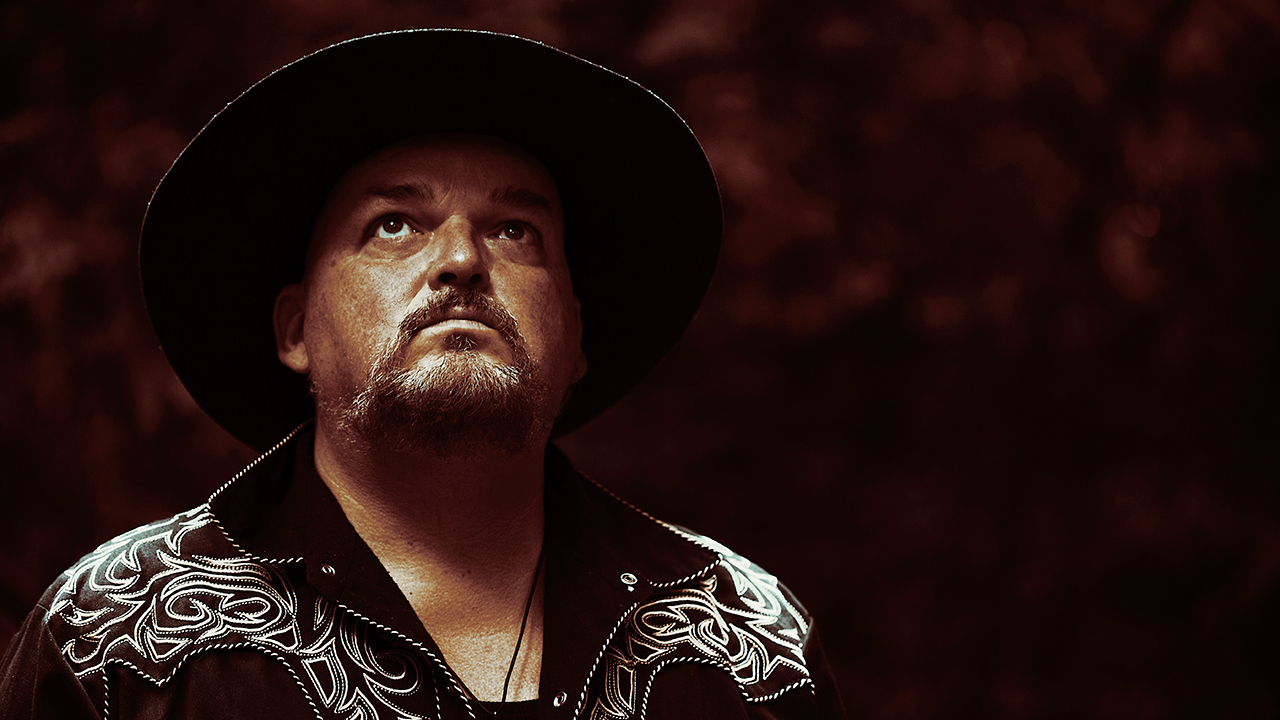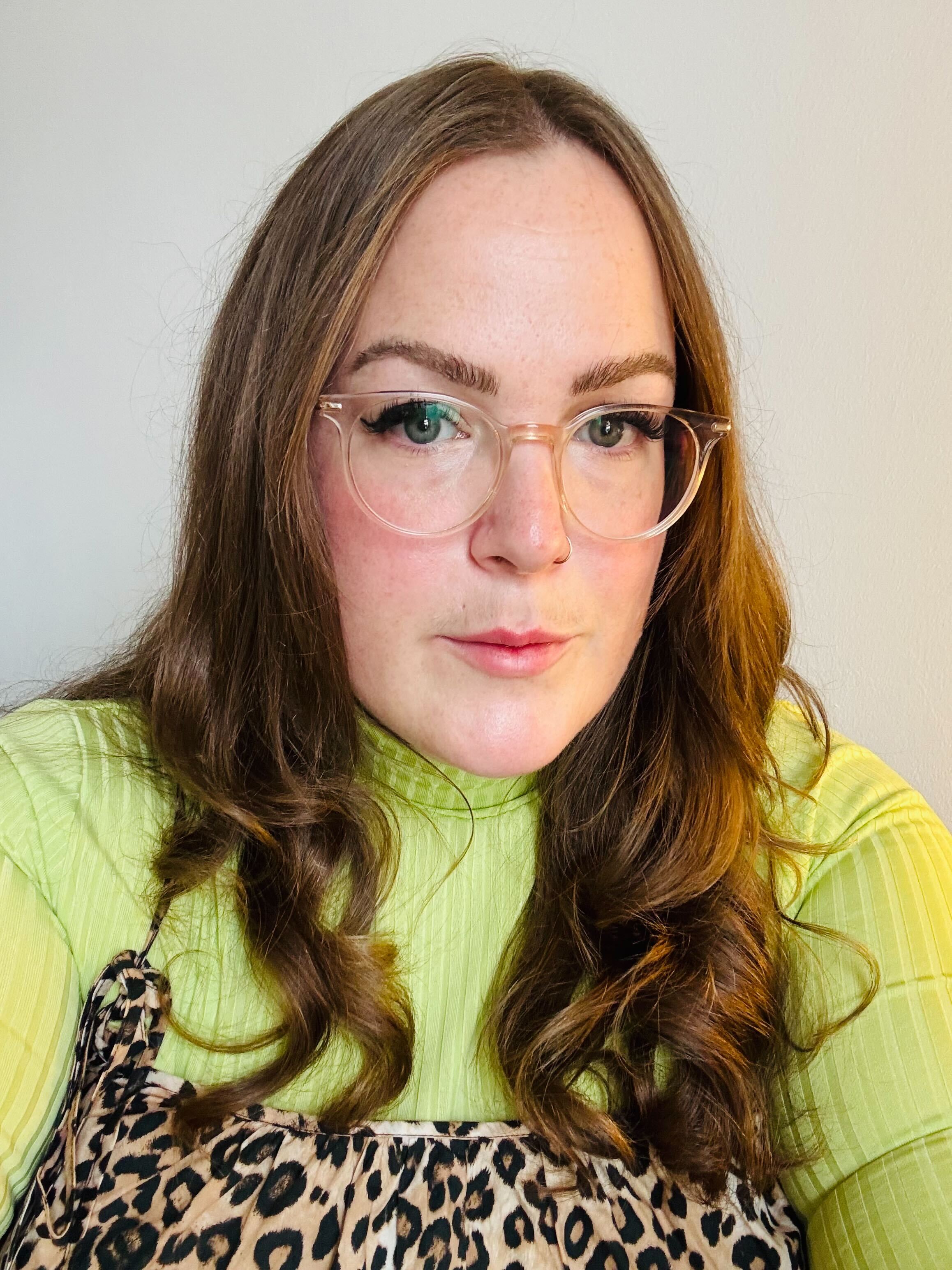Alain Johannes has an enviable CV. Originally breaking through with alt-rockers Eleven, a project conceived with ex-Red Hot Chili Pepper Jack Irons and his late wife Natasha Shneider, he went on to decorate the liner notes of records by Chris Cornell, Queens Of The Stone Age, No Doubt, Mark Lanegan, Jimmy Eat World, Brody Dalle, Arctic Monkeys and PJ Harvey among others. Trust us; chances are you'll be familiar with his work in some capacity, even if you didn't know it was his.
But in recent years he's turned his attention to his own projects. After releasing Spark in 2010 – both his first solo album and first since Natasha's death – Fragments and Wholes, Vol. 1 followed in 2013.
Today Johannes releases Hum, his first solo album in seven years and here, he joins us to talk us through the album one track at a time.

Mermaids Scream
Alain Johannes: "This was one of only two semi-realised ideas I had going into recording Hum. I had posted an early version on my Instagram using my Portuguese guitar. I had the melody too. I knew it was going to be the first song on the album. I had just seen Robert Eggers' movie The Lighthouse and it had struck a deep chord with me, with its atmosphere tinged with mythological themes and the eternal and mysterious sea.
"I had a dream after where I heard Chris Cornell’s and Natasha’s voice faintly mixed in with the sound of waves crashing. It was like they were calling me or trying to tell me something. After I laid down the Portuguese guitar I tried to mimic waves crashing the sea rolling with the percussion, using fretless EBow guitars to underscore this mysterious ancient quality. The lyric came quickly, during the overdubs I sang it, then added the monk-like vocals in the middle section. Then, the Carlos Paredes’ inspired lines on the Portuguese guitar which I felt would support the melancholy inherent in the song."
Hum
AJ: "Hum was the other bit of music I had posted on my instagram. I had a melody running in my mind later while I listened back to the post and remembered that. The feeling of this song reminded me of Nick Drake and those beautiful recordings in the early 70s. I used my Tricone resonator acoustic in a DADGAD tuning capo on the 4th fret. That tuning lends itself to harmonic motion but that is grounded in a tonal centre. It’s a gentle and meditative finger picked sequence which leads to the melodic and lyrical throw of the song.
"I envisioned a forest setting and the gentle breeze and sounds of leaves underfoot as the old oak comes into view. A sacred place where the connection beyond time and space to your missed loved one still exists."
Hallowed Bones
AJ: "In the process of making the album and even leading into it I kept envisioning what it would sound like. I played a mental game where all I had to do was summon it from a future time when it was already existing. For Hallowed Bones, which was the third day of recording, day one had yielded Mermaids’ Scream and day two Hum, I sat listening to both in sequence then in the silence following imagining what would come next. I knew it had to be energetic and full of life and motion.
"Using the DADGAD tuning but capo on the 5th fret a kind of pagan dance appeared in waltz time. Images of dancing around a fire, a connection to nature and the life/death cycle. So the image of carrying bones in your pocket like memories of where you came from, the ancestral connections as well as loved ones still inside you and joining you on your journey forward led to the lyrics. I wanted air and wood and fire textures for this song, it felt right, so I used harmonium, shaman drums and percussion, and a bowed banjo which gave it this pagan or ancient texture to accompany the Tricone guitar."
Someone
AJ: "After Hallowed Bones, on day four of composing/recording the album, I woke up for my morning walk and started to think about this inner voice. Not a helpful one, but a negative one instilling self-doubt, insecurity and self-sabotage that I’ve seen in myself and others sometimes. So I had a lyrical beginning to the song. The lyrics called for a troubadour or folkish guitar part fingerpicked and I felt it had to be sparse and in a kinda down tone. Once the song appeared I recorded the acoustic guitar, sang it, then added the lonely EBow guitar break and the call response vocals in the chorus. The lyric is quite dark so I felt a nice contrast would be the Beatles-y, triple-tracked high vocals and melodic feel in the chorus."
If Morning Comes
AJ: "I spent many sleepless nights while sick before making the record with difficulty breathing from the lung infection. I would repeat this mantra or series of thoughts praying for healing and another day, so the phrase 'if morning comes' stuck with me and I set out to write and record the song on day five.
"I grabbed my 12 string acoustic and tuned it to DADDAD which I used on Make God Jealous off the Spark album, and started jamming on it. The chord sequence soon appeared and the melody with it. I then wrote down the lyrics more with each pass. I think in the end it was about an hour or so and the song was ready to record. I laid down some basic percussion to groove to then I recorded the 12 string guitars and refined and added more percussion using frame drums, my big hand drums and shaman drum and added a bass line using a Hofner Violin bass copy.
"It all started to feel a bit psychedelic and droney once I added one pass of improvised electric guitar running stereo fx chains into two amps. Quite a thick and complex sound which then inspired me to sing the lead vocals and reinforce the chorus section with tripled vocals. It’s a hopeful song lyrically and the insistent but strong relaxed pulse I felt would support the feeling of gratitude and focus of a new day and a new chance."
Free
AJ: "On day six I walked into my studio and immediately grabbed my cigarbox guitar or 'Cigfiddle' as Matty Baratto the luthier calls them. It’s been my go to and main instrument on all my solo shows and I connect with it easily so within minutes the fingerpicked main part started to appear. The sound of the Cigfiddle always feels like the desert, where one can be alone but not feel lonely. Often a magical place of power, as they say, with no distractions and far from the interference and chatter of the city.
"As I was playing through the changes I started to envision myself on a walkabout or journey through deserts walking while playing. The past now not weighing on me but rather gently helping to propel me forward into a mysterious but exciting future that calls out to me. I only added some gentle vocal textures to the song once I sang the main vocal. It needed to be sparse like the landscape implied in it."
Sealed
AJ: "Sealed is the darkest song on Hum for sure. It started as an idea to come up with a bluesy and brooding jam. I envisioned death like something that is chasing me and also an internal clock ticking down, but also inviting me into a mystery with the promise of rejoining the source, the 'all' as it were, and ending the suffering of existence and separation. It’s pretty dark. The lyric led to the textures and atmosphere, using a tuned down acoustic, a kind of galloping percussion track to underscore the feeling of trying to escape something that is chasing you, and a tense atmospheric drone track I did with electric guitar and pedals. In the chorus death appears kind of gentle and beckoning in the vocals in octaves. The tension I was after led to the solo strat with the amp on full – all feedback and squeals and edge."
Here In The Silence
AJ: "On day eight I again grabbed my Cigfiddle and started to look for this song I imagined – sparse and bittersweet very George Harrison-esque with double tracked vocals. The lyric came quickly once the progression appeared. It’s a place locked away. A moment beyond time where two lovers can always be together. It’s between sound, between light, between reality, forever safe. The only other texture besides voices and Cigfiddle is a Native American wooden drone flute which has one drone side and one melody side. It’s slightly off concert pitch and I love the feeling it gives almost like those interludes on the White Album."
Nine
AJ: "I took a day off after Here In The Silence and went to the beach and drove through the canyons in Malibu. It was a needed reset and it led to my playful mood the morning I started composing and recording Nine.
"The album is full of organic acoustic sounds and a couple electric guitar parts so I thought why not start the writing of this with a drum machine. I have this cool Arturia analog one called a Drum Brute Impact and it has a randomiser knob. I programmed a basic pattern into it and while recording it through a couple guitar pedals I played around with filters and decays and the randomiser performing the drum machine part in real time for five or so minutes. I wrote the main acoustic parts on top jamming to the drum machine track, then built it up with fuzz bass, EBow guitars, and a kind of proggy guitar solo – 'cause why not – and once the bed was ready, I kind of gibberish sang over it a few times until some sounds I liked led to the words in the lyrics. The meaning of them appeared bit by bit.
"It's quite abstract, but I definitely kept hearing that insistent 'Number nine, number nine, number nine' from the White Album. It’s something I can always recall – that first exposure as a six year old to that album and how mysterious and odd that track in particular made me feel. Like things bubbling up from a dream. So 'nine' became this being that communicates with me in dreams and dream language. Mythical."
Finis
AJ: "The last song is kind of a lament or dirge in 3/4 and I wanted it to feel gothic or medieval and have at its heart the idea of a sacred bond – a blood pact as it were. A charge to keep a legacy alive, a memory continuing and honoured as long as one draws breath.
I used the Cigfiddle again on this because of its troubadour-like quality, adding to it deep frame drum and banjo played with a bow which mimics a hurdy gurdy as well as a bowed Indian Classical instrument called a Sarangi which is quite mournful and vocal in it.s texture. The instrumental break has a sustainer guitar, almost bluesy vocal-like melody to contrast my vocals mimicking monks singing. In the chorus I added a lonesome bluesy vocal moan. I pushed the textures because in the end the lyric is full of an honouring and conviction that pushes back against the mourning atmosphere."
Hum is available now via Ipecac Recordings

